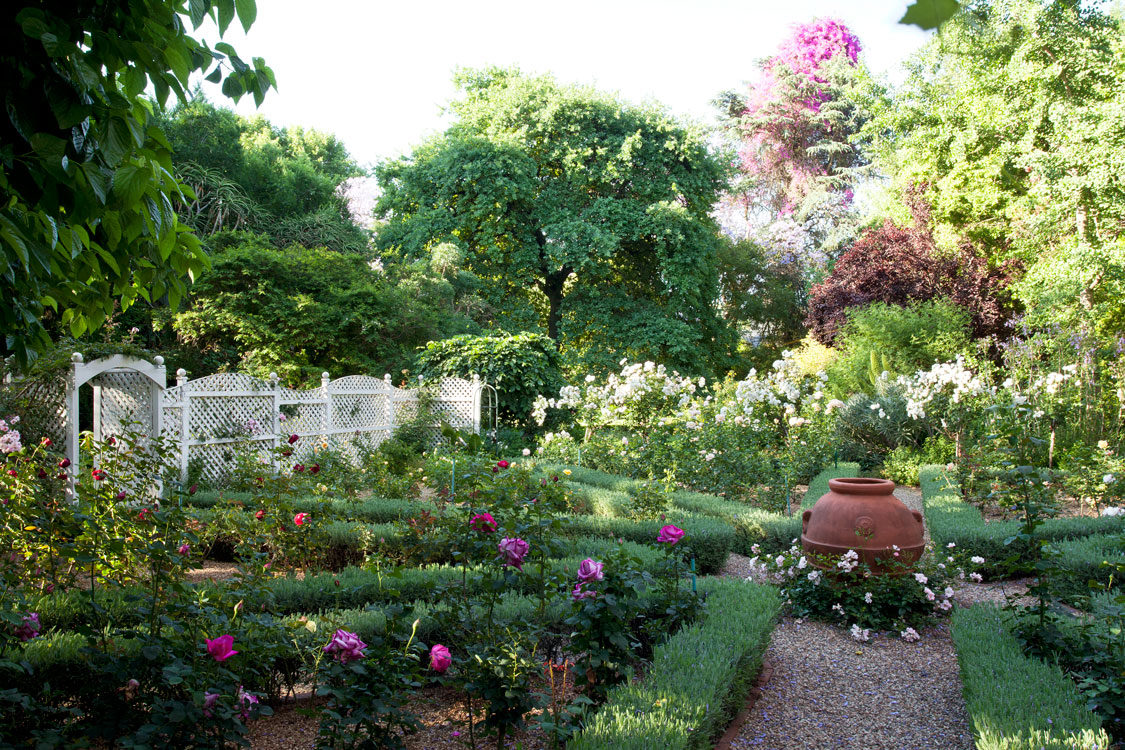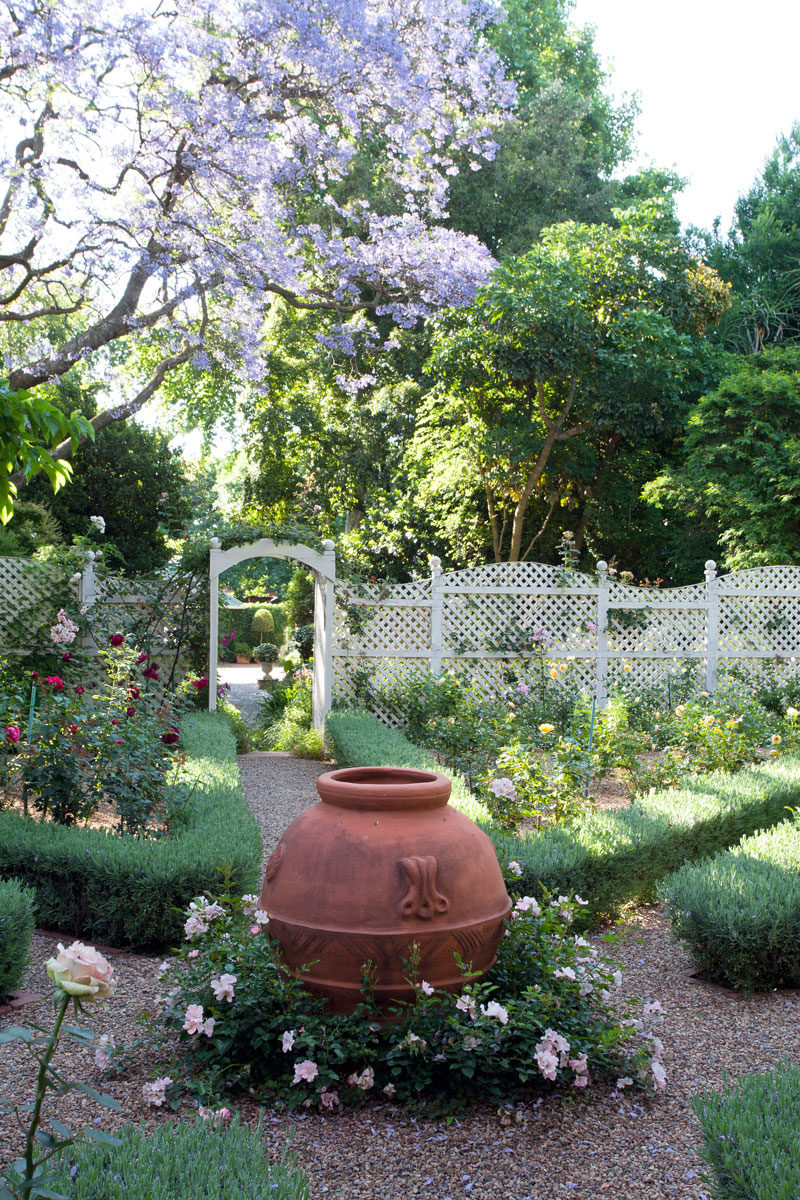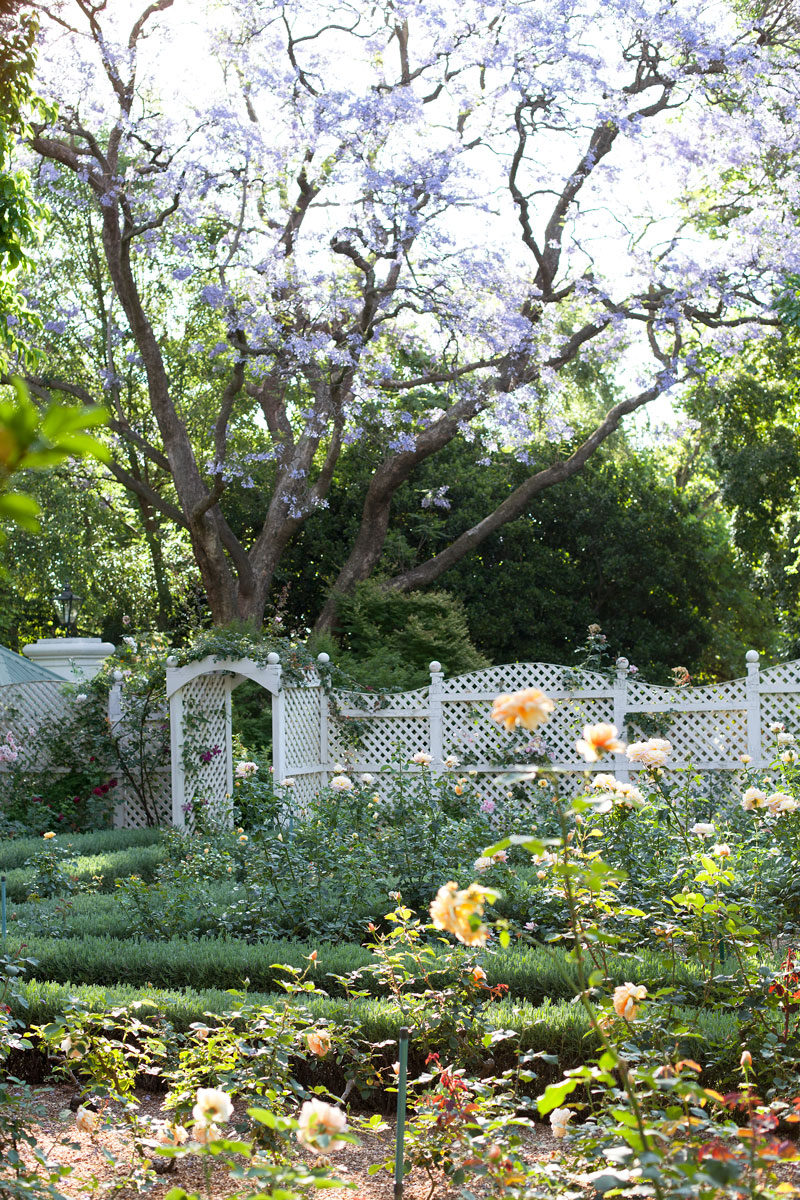“One of my favourite places is the rose garden, especially if it’s been laid out formally with walkways for easy picking and maintenance,” says garden designer Shirley Wallington. Here are her top tips for planning a rose garden
One of life’s pleasures is being able to pick armfuls of fragrant roses from your garden. If you have the space, you should take this pleasure one step further and create a designated rose garden. Not only is maintaining your roses so much easier when they’re all in one place, the effect of an enclosed area filled with roses is magical.
Select the right position

A large urn forms the focal point of Di Barrell’s lovely Jo’burg rose garden. Gravelled walkways radiating outwards are accentuated by lavender hedges.
- You can create a rose garden in any size garden but keep in mind that you need at least one square metre for two to three roses.
- It’s very important that a rose garden gets at least six hours sun a day. Ideally this should be morning sun, but if the area’s in shade from midday onwards, it’s not a problem and your roses won’t dry out too quickly.
- The area should also be level. However if your garden is sloping, you can create a rose garden on a series of terraces with hedges in front and pathways behind.
Creating your design

Enclosing a rose garden with walls, a trellis or hedges heightens the romantic atmosphere and the scent of the blooms.
- A symmetrical design is easier on the eye and helps to show off the roses. A geometric shape, such as a square, rectangle or circle, is simplest to divide into compartments for groupings of different coloured blooms.
- Plan your rose garden so there’s a focal point either in the middle or at the far end against a wall or fence. Add to the romantic atmosphere by including features like benches, sculptures, a fountain and urns overflowing with roses.
- One of the attractions of a rose garden is being able to stroll through it to enjoy the scents and sights, so include pathways between the beds and make these at least a metre wide. This will also allow you to push a wheelbarrow along them; anything less can seem constricting.
- Gravel is lovely for pathways but does need to be replaced every year or so. (To minimize weeds, place a weed guard beneath the gravel.) Lawn and paving also works.
- As the stems of rose bushes are not the most attractive, I like to surround each compartment in the design with a low hedge. This also accentuates the design and looks attractive even when the roses are out of season. Suitable hedging plants include lavender, buxus and abelia.
HERE ARE SOME TIPS ON GROWING LAVENDER
Preparing the soil

In this garden, white latticework was used to screen the driveway.
- Preparation of the soil is crucial to ensure healthy roses and beds need to be well-trenched to at least 50cm deep.
- Remove any roots from neighbouring trees as these will steal nutrients from the roses.
- Dig in bonemeal, super phosphate, Epsom salts and 5:1:5 fertiliser at the recommended rates. It’s also worth the effort to use the rose soil mix provided by the grower when planting each rose.
Planting pointers
- To show off roses to their best advantage, plant the taller roses at the back and the shorter varieties in the front.
- Traditionally the ground around roses is left bare with just mulch to cool the roots and feed the plants, but more and more gardeners are now underplanting with annuals.
- In a more contemporary rose garden, keep to one type of groundcover. The white flowers of erigeron and alyssum for example are a good foil for colourful roses. A grey groundcover like cerastium also looks attractive.
- Plant Iceland poppy seedlings under roses in late summer so when the roses are pruned in winter, the garden is still filled with colour and when the poppies die down, the roses come back into bloom.
